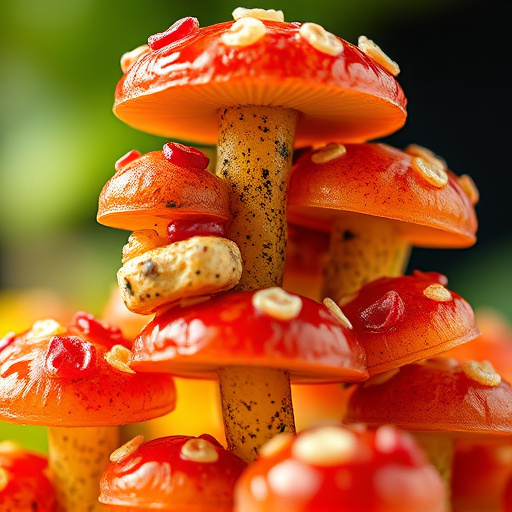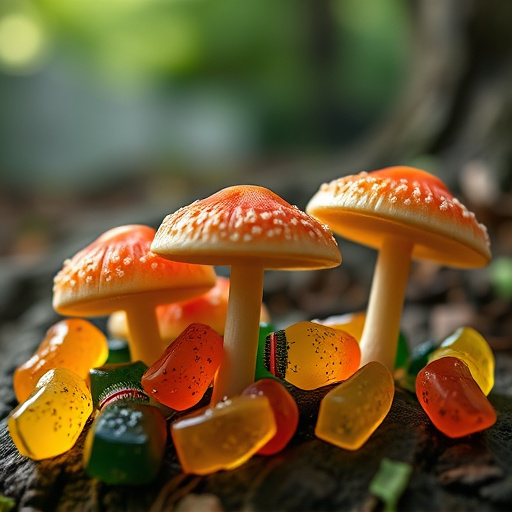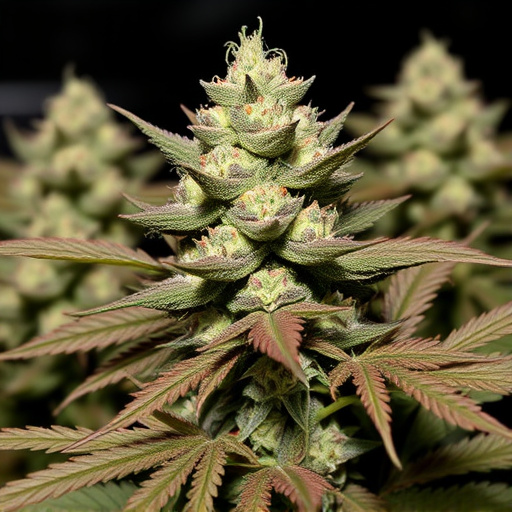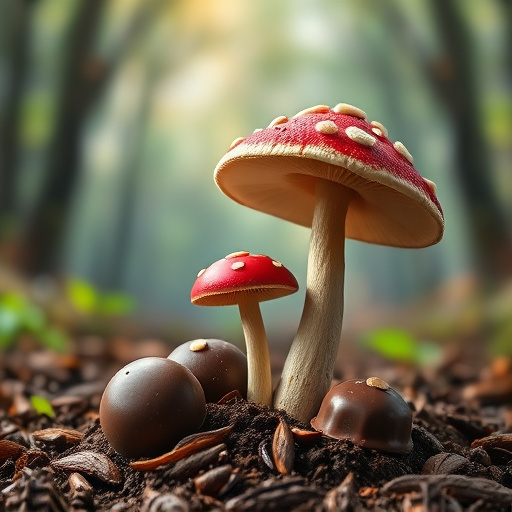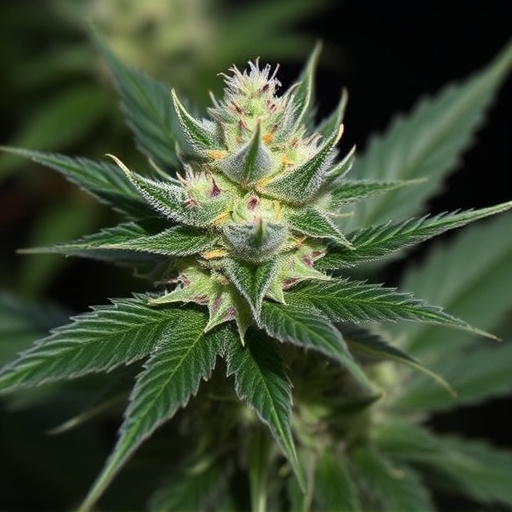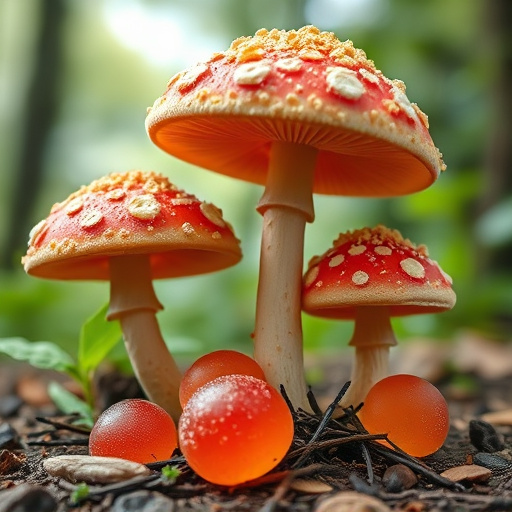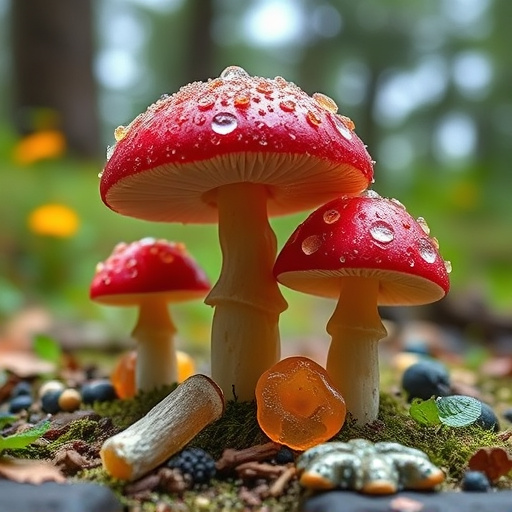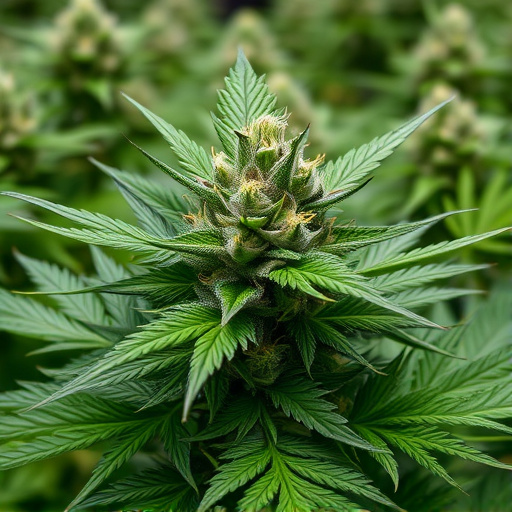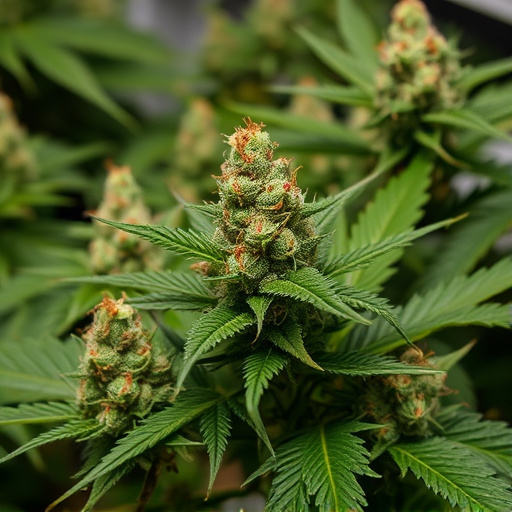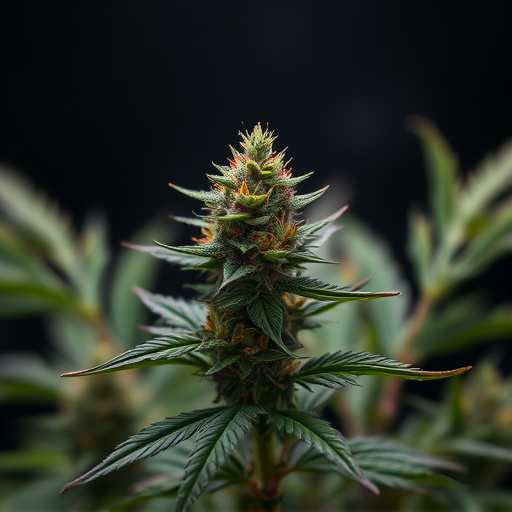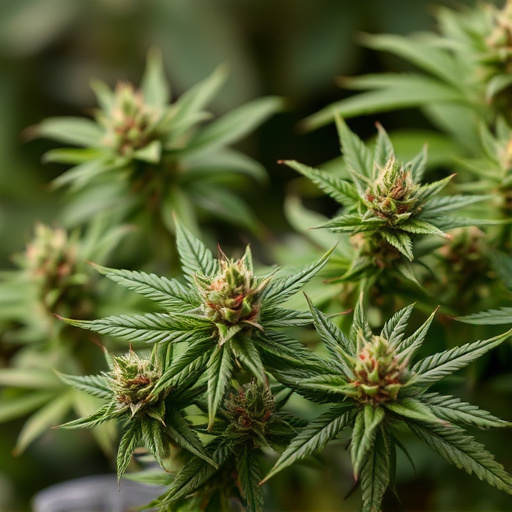Cannabis aroma is a complex interplay of cannabinoids like THC and CBD, known for their psychological effects and therapeutic benefits, along with terpenes that contribute to its flavor and scent. Strains bred for anxiety relief, characterized by high myrcene content, are popular for their sedative properties. Genetic makeup and environmental factors, or terroir, significantly influence cannabis aroma, making strain selection based on desired therapeutic outcomes crucial. The perception of cannabis scent is subjective but informed by scientific research exploring the interaction between terpenes and the endocannabinoid system in managing anxiety.
Unraveling the enigmatic aroma of cannabis is a fascinating journey, especially for those seeking relief from anxiety through specific strains. This article delves into the intricate world of cannabis scents, exploring three key factors: chemical compounds and terpenes, genetics and terroir, as well as individual perception and strain effects. Discover how these elements contribute to the unique aromas, including those known for their calming properties, helping you navigate the market for anxiety-relieving anxiety weed strains.
- Chemical Compounds and Terpenes: Explore the role of cannabinoids like THC and CBD, as well as terpenes, which significantly contribute to the unique aromas associated with different cannabis strains, including those known for their potential anxiety-relieving effects.
- Genetics and Terroir: Discuss how the genetic makeup of cannabis plants and environmental factors, such as climate and soil composition, play a critical role in shaping the aromatic profile of various strains, including specific varieties renowned for addressing anxiety.
- Individual Perception and Strain Effects: Examine the subjective nature of taste and smell perception, and how personal experiences can influence one's interpretation of cannabis aromas. Delve into the scientific understanding of strain-specific effects on anxiety and their potential connection to aromatic characteristics.
Chemical Compounds and Terpenes: Explore the role of cannabinoids like THC and CBD, as well as terpenes, which significantly contribute to the unique aromas associated with different cannabis strains, including those known for their potential anxiety-relieving effects.
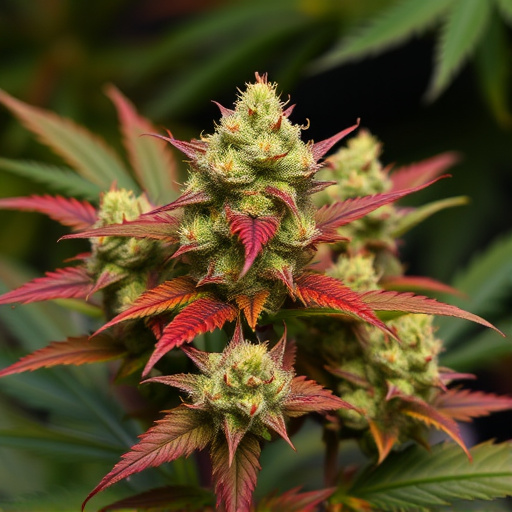
Cannabis aroma is a complex interplay of various chemical compounds, with cannabinoids and terpenes playing a pivotal role. Cannabinoids, such as tetrahydrocannabinol (THC) and cannabidiol (CBD), are well-known for their psychological effects on the human body, particularly in relation to anxiety relief. THC, often linked to feelings of euphoria, can also induce anxiety or paranoia in certain individuals, depending on dosage and personal tolerance. On the other hand, CBD is gaining popularity for its potential therapeutic benefits without inducing any psychoactive effects.
Terpenes, organic compounds responsible for the distinct aromas and flavors in cannabis, further contribute to the unique experiences associated with different strains. Research suggests that specific terpenes may enhance or modulate the effects of cannabinoids. For instance, myrcene, a common terpene found in many anxiety weed strains, is believed to have calming properties that complement CBD’s anxiolytic (anxiety-reducing) effects. This combination can make certain cannabis varieties particularly effective for those seeking relief from stress and anxiety.
Genetics and Terroir: Discuss how the genetic makeup of cannabis plants and environmental factors, such as climate and soil composition, play a critical role in shaping the aromatic profile of various strains, including specific varieties renowned for addressing anxiety.
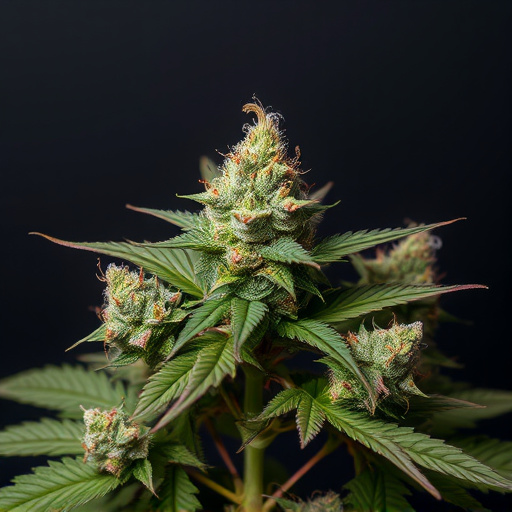
The genetic makeup of cannabis plants acts as the blueprint for their aromatic profile, dictating the presence and intensity of various terpenes and cannabinoids that contribute to smell and flavor. Different strains, bred for specific traits like relaxation or anxiety relief, have unique genetic characteristics that influence their aroma. For instance, strains known for addressing anxiety often possess higher levels of myrcene, a terpene known for its sedative properties, alongside other calming compounds.
Environmental factors, encapsulated by the concept of terroir, also significantly shape cannabis aromas. Climate and soil composition play pivotal roles in determining the expression of genes within the plant. A strain renowned for its anxiety-relieving qualities may exhibit vastly different aromas depending on where it’s grown—a warmer climate could intensify its earthy notes, while cooler temperatures might highlight citrusy or floral elements. Understanding both genetics and terroir is crucial for cultivators aiming to produce specific anxiety weed strains with distinctive and therapeutic aromas.
Individual Perception and Strain Effects: Examine the subjective nature of taste and smell perception, and how personal experiences can influence one's interpretation of cannabis aromas. Delve into the scientific understanding of strain-specific effects on anxiety and their potential connection to aromatic characteristics.
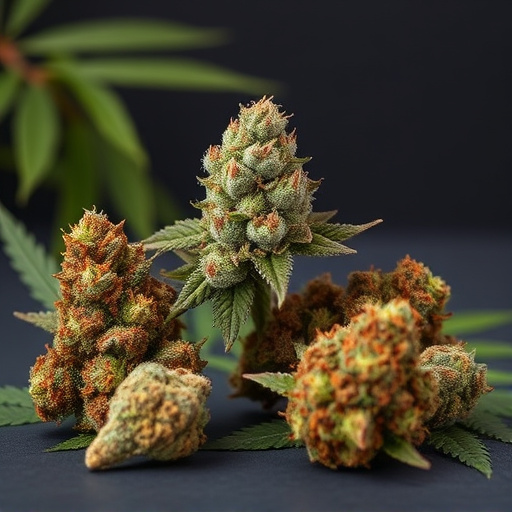
The perception of cannabis aroma is a deeply personal experience, shaped by individual sensory acuity and past encounters with various strains. What one person describes as earthy and floral might be perceived as pungent or even off-putting to another. This subjectivity stems from the intricate dance between our olfactory senses and the brain’s interpretation of smells, which can vary widely among individuals. Personal experiences play a significant role in shaping our understanding of cannabis aromas; certain strains may evoke specific memories or emotional responses that influence how we describe their scents.
Beyond subjective perception, there is growing scientific interest in the connection between anxiety weed strains and their aromatic profiles. Research suggests that different cannabis strains can have unique effects on mood and cognition, with some varietals known to induce feelings of relaxation while others may enhance alertness or even increase anxiety in certain individuals. These strain-specific effects could be linked to the prevalent terpenes (aromatic compounds) within each variety, as these molecules are believed to interact with the endocannabinoid system and modulate cognitive processes. Understanding this relationship can provide valuable insights into tailoring cannabis experiences to manage anxiety, potentially guiding users towards specific strains based on their desired aromatherapeutic outcomes.
The distinct aroma of cannabis, particularly among anxiety-relieving anxiety weed strains, is a multifaceted interplay between chemical compounds, genetics, and individual perception. Terpenes and cannabinoids, such as THC and CBD, contribute to the unique scents that differentiate various strains. The environment in which these plants grow also plays a crucial role, shaping their aromatic profile. Understanding these factors helps us appreciate the complex nature of cannabis aromas and their potential effects on different individuals, especially those seeking relief from anxiety.
